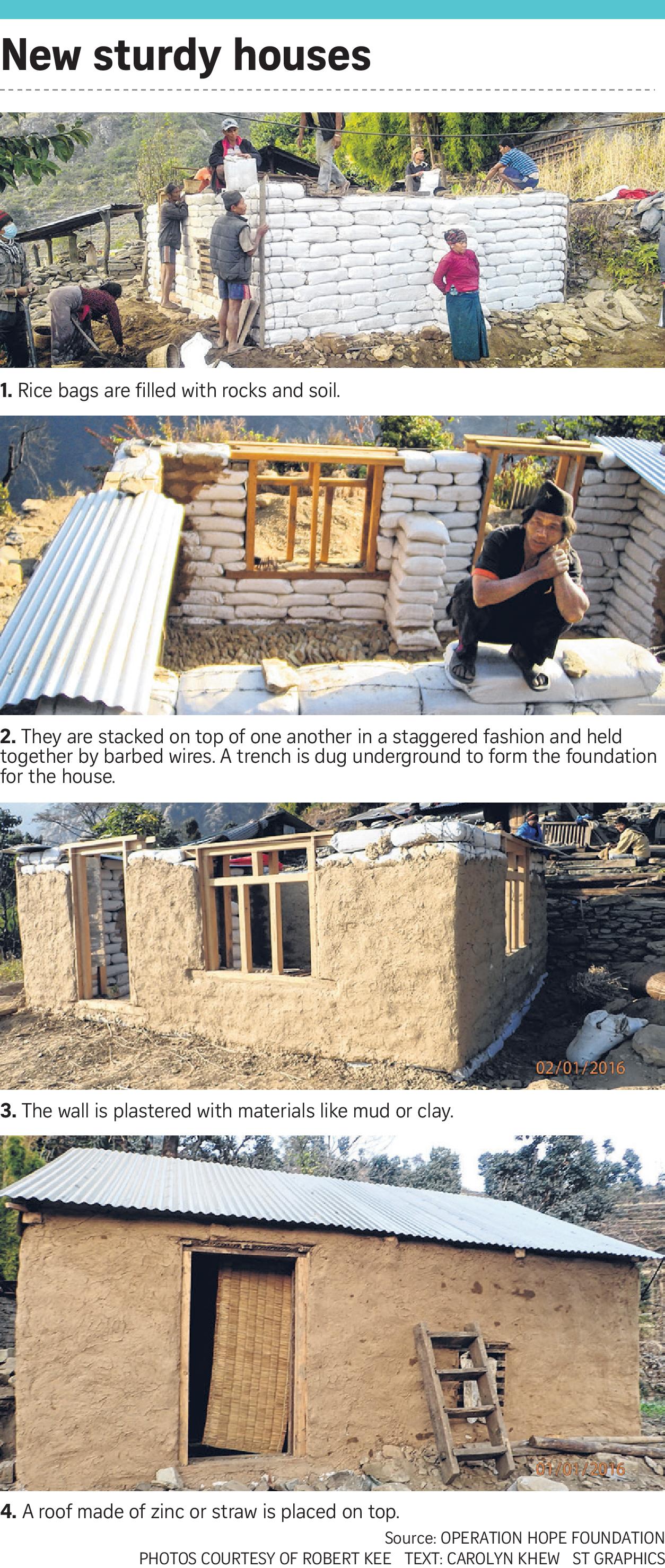A gunny sack may not seem like much, but a Singapore non-governmental organisation (NGO) has been using such sacks to make sturdy houses for Nepalese displaced by last year's earthquakes.
Operation Hope Foundation (OHF) had aimed to build 350 of these rice-bag houses by December last year for villagers displaced by the twin earthquakes that struck last April and May.
But its plan has hit a snag. A severe shortage of fuel in Nepal has made it hard to get the materials to where the villagers are, especially those in remote areas.
Making the situation worse is that many villagers would rather wait for cash handouts from the Nepal government, said Mr Robert Kee, 68, founder of OHF.
To ensure fair distribution of aid, the villagers cannot get grants from their government if they have already received aid from an NGO.
"It is very frustrating because we have the money," he said.

"Right now, the situation is very bad in Nepal. It is winter, and many are still stuck outside in tents."
Nepal has been facing shortages of fuel and fresh produce since last September, after trucks from India, which supplies most of the country's vital imports, stopped crossing the border.
Some think India is retaliating against Nepal's new Constitution, which is said to discriminate against ethnic Indians in the country, but Indian officials have denied this, the South China Morning Post in Hong Kong reported.
OHF is hoping to speed things up by working with other NGOs in Nepal later this month to equip local villagers in the building of these houses.
Of the 33 homes planned for Dhading district, only 14 have been completed. There are plans to build sample houses in other districts such as Gorkha so that the locals can be convinced of their benefits.
"Fuel shortage is something that affects every NGO, and perhaps the rice-bag solution is best suited in this case," said the group's Singapore director Chng Eu Lee, 43.
While traditional building methods use a lot of materials, the rice-bag houses require only key items such as the bags, barbed wire and zinc sheets, he said.
Experts say that although rice bags are not commonly used to build houses, they are relatively strong.
Professor Chu Jian of Nanyang Technological University's School of Civil and Environmental Engineering said: "It is quake-proof as it can sustain large displacement."
He added that the method is easy and cost-effective.
Assistant Professor Darren Chian of the National University of Singapore's Department of Civil and Environmental Engineering said: "Rice-bag houses allow for some flexibility compared with brick houses, which are very rigid and may not be able to withstand quakes."
Farmer Mem Tamang, 33, is a villager who has had a stable roof over his head after he accepted the NGO's help last year.
Mr Tamang, who has a wife and two sons aged five and 10, had built a house using money he earned working in Malaysia, but this was destroyed in the quake.
He and his family hid in the forest initially, and later sought refuge in tents and makeshift huts.
He is happy they have a safe place to live in now, saying: "The Bora Ghar (bag house) is a stable and strong house and is giving us a home once again. We are very happy."


